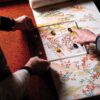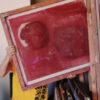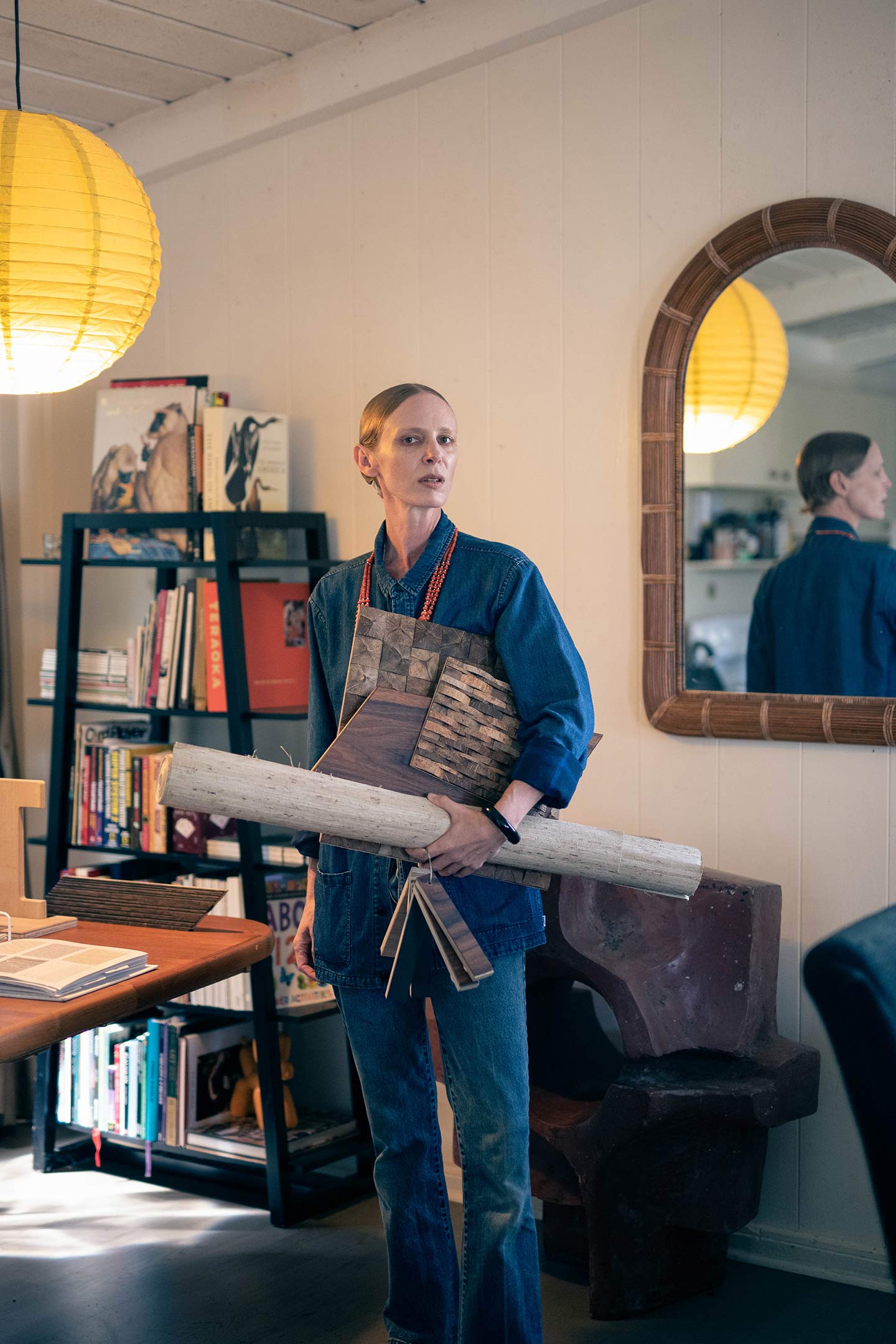Text by Natalie Schack and Rae Sojot
Images by Chris Rohrer and courtesy of the designers
Michelle Jaime
Michelle Jaime gets by with a little help from her friends. Luckily, she has some creative friends. As president and co-founder of The Vanguard Theory, a Honolulu-based interior design firm, Jaime’s got her fair share of the creative gift. Her firm’s high-profile design projects, like crafting the interior aesthetic and vibe of Surfjack Hotel and Swim Club and Hotel Renew have set a hip new tone for the next generation of Waikīkī hotels.
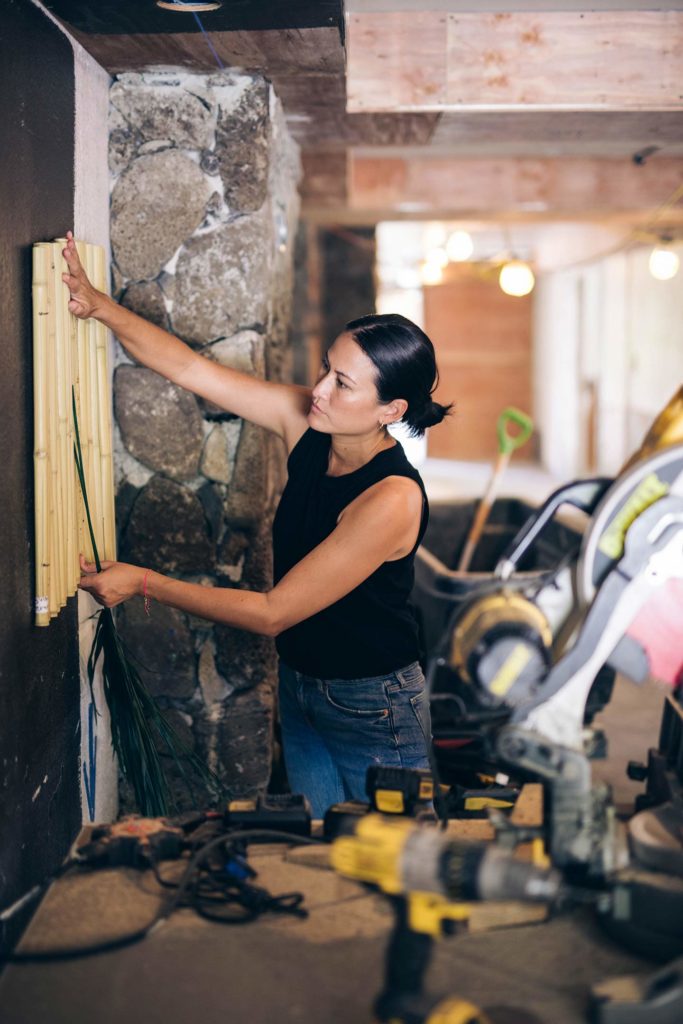
Yet for Jaime, what really makes the firm’s work sing is being part of a collective story, when she enlists a crew of creatives who come together to make something meaningful.
“I think as a creative person, you’re always wanting to learn new things and experiment with new things. Collaborating with artists, that’s the best way,” she says, pointing to the Surfjack project, in which they invited more than a dozen artists to participate.
As a designer, she tends to be more calculated, needing to anticipate elements like budgets, timelines, and clients. Artists, however, “have this passion and this way they can express themselves that I find myself gravitating towards,” she says. If not artists, Jaime taps other creatives in local food, crafts, or artisan goods.
At Hotel Renew, which was designed around a wellness theme, she recruited Blue Tree Cafe, known for its healthy foods and juice cleanses, to run the bar. “It couldn’t be artists, because we didn’t have the landscape for it,” she says. “But we took that idea of looking local first.”
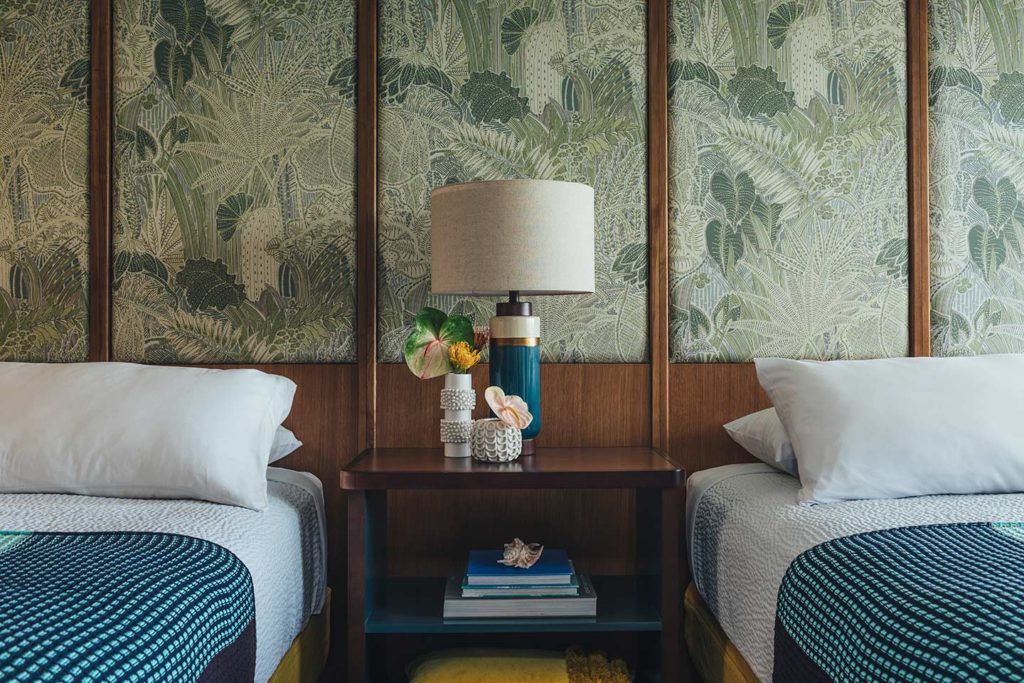
Jamie co-founded The Vanguard Theory with former partner Judy Andrade a decade ago, right in the middle of the recession. The two had been laid off, so they seized the chance to be their own bosses. The challenge? In that economic climate, opportunities were drying up, so “we had to create our own,” Jamie says.
The recession ended up working to their advantage. Through contacts they had fostered in the industry, they hopped on as contractors for projects helmed by larger, more established companies that were understaffed as a result of recession layoffs.
Right out of the gate, the pair was able to work on significant projects that fledgling firms would not normally have the opportunity to do. By the time the economy had recovered, The Vanguard Theory had come into its own.
I think as a creative person, you’re always wanting to learn new things and experiment with new things. Collaborating with artists, that’s the best way.
Despite being a small studio, The Vanguard Theory is making big waves in the narrative of Hawai‘i design, combining fresh, outside-the-box thinking with hip, outside-the-studio input.
When they designed the pool at Surfjack, for example, they envisioned an eye-catching, stand-out mural at the bottom of it. By collaborating with branding agency Wall-to-Wall Studios and Matthew Tapia, the artist behind the hotel’s now-iconic “Wish You Were Here” pool lettering, the firm made this vision a reality.
From prints on guest room walls to products in hotel shops, Jaime and her team get down to the minutiae, gathering the goods, materials, and products that will create just the right experience.
One of their latest projects was a Hawai‘i-themed bar—in Nashville, Tennessee.
“We did a bar which the client really liked at the Surfjack, and they really wanted to make a Hawai‘i-themed bar. They called it B1281 Surf Club, which is funny in Nashville,” she laughs. Again, they tapped their network of creatives, bringing in letterer Jeff Gress and Wooden Wave artists Matthew and Roxanne Ortiz to contribute.
“If we did the same thing by ourselves, working in a silo every single day, we would be off point,” she says. “When we collaborate with other people, it always keeps it fresh.” — N.S.
Nalani Sato
Nalani Sato’s home contains a smorgasbord of patterns and textures. Stacked in corners and on tables, rolled up and piled on shelves and above cupboards, there are swatches of geometric fabric in everything from handsome burgundy to mid-century periwinkle; chunks of wood in walnut or ash; cork accented with dramatic swaths of gold.
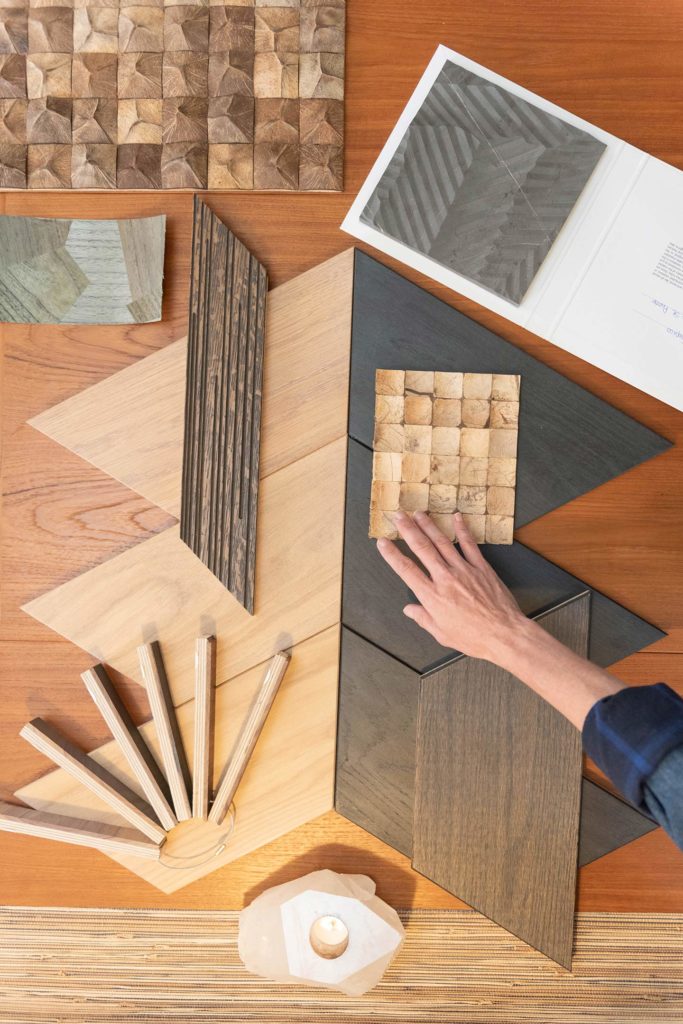
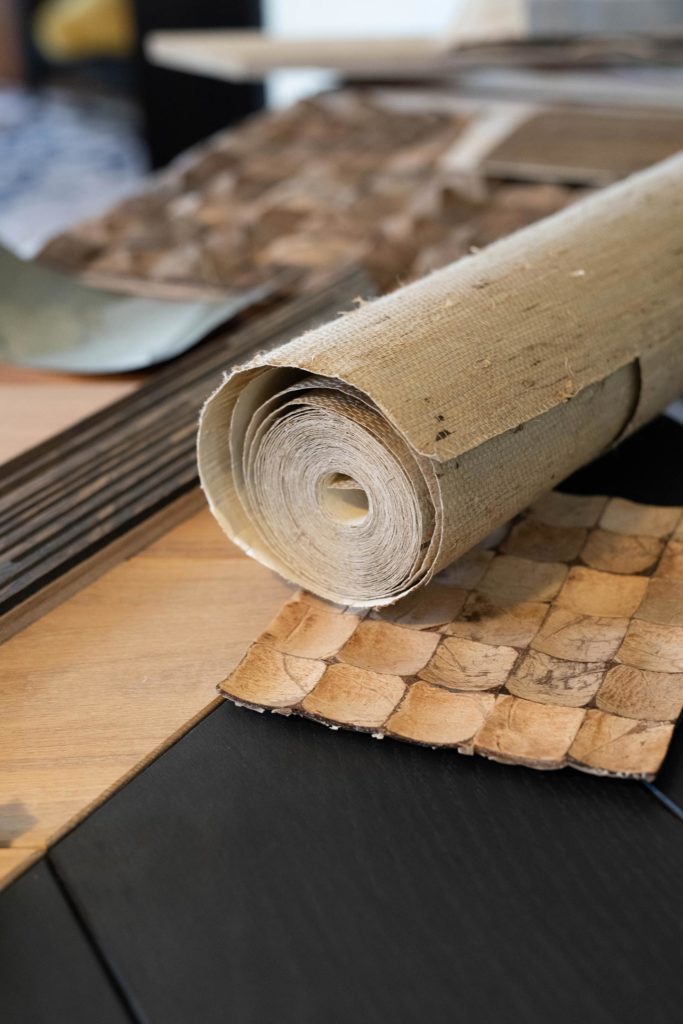
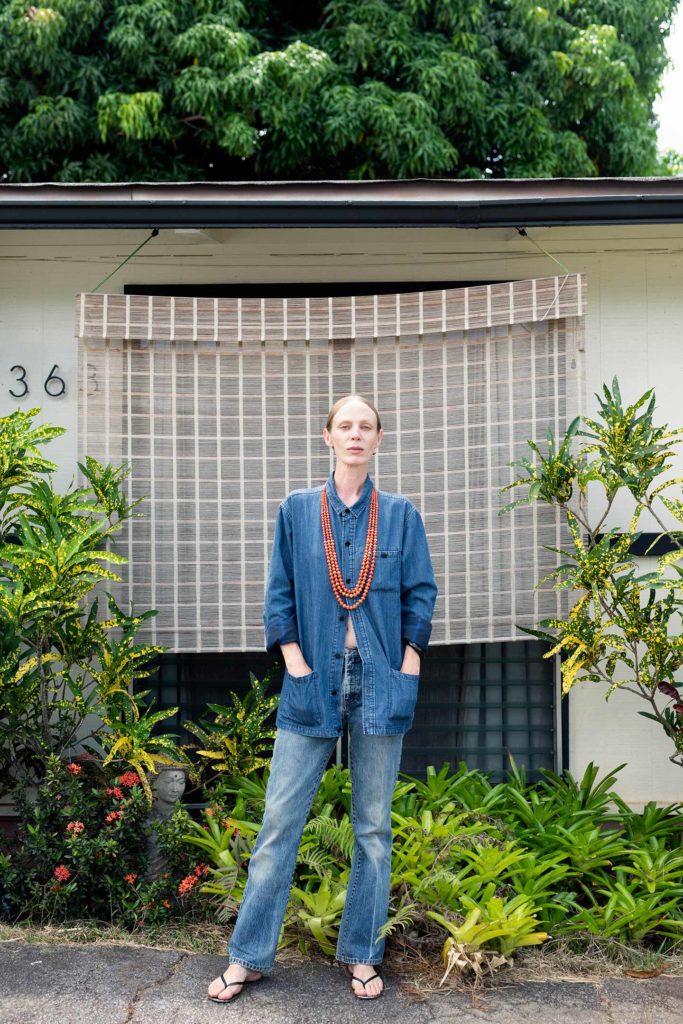
Sato drifts gracefully through the halls and muses over rolls and rolls of fabric that are heaped to the rafters in every room of the house. She is like a librarian of tactile tomes, drinking in the collection’s elements with her eager eyes and hands.
“Isn’t this gorgeous?” she asks, pulling down a roll of woven fiber from Japan. It’s a subdued selection: clean, organic, natural. It’s redolent with a scent like fresh grass, outdoor breezes, and bamboo. It feels like stillness in a garden. Simplicity. Peace. She sweeps her fingers over it admiringly.
Within this house of innumerable materials are innumerable possibilities. Sato is a dealer in the oft-overlooked arena of wallcoverings, from wood to tile to vinyl to linen. The potential impacts that such decor can have on a room—whether it be a luxurious suite at Halekulani or the festive shave ice stand of Uncle Clay’s House of Pure Aloha—are subtle yet myriad and powerful.
“It’s a way for a designer to tap in subliminally to the guest or the customer,” she says. “To almost manipulate them into thinking that they are in a safe, natural space.”
Products from her work life have poured into her home as she transitions from Waihona Surfaces, which she co-founded, to starting her own business, SUMO, an acronym for Surface Mode of Operation.
Sato’s history with the world of surface textiles and wallcoverings is a long one. Her foray into it began with the family business, Architectural Services, which was founded by her father and served as a purveyor of high-quality wallcoverings for designers and architects.
After working luxury events in New York City and going to school for fine arts, Sato came back to the islands in 2001, joining her father’s team a few years later as a sample coordinator, which meant managing the catalog of product samples.
I just want to see these creatives here treated fairly. I want to see them treated the same way they would be treated in New York City or Los Angeles or Chicago or Houston.
In this role, she discovered her unexpected knack and love for day-to-day tasks like organizing the showroom and handling the books. In 2017, she left to co-found Waihona Surfaces, and in 2019 she debuted SUMO, as she likes to call it, a name inspired by her love of sumo wrestling.
It’s a dream job for a creative like her. “I love to paint. I appreciate many different styles of everything,” she says. “I think with all artists, when one is strictly in the creative sense, one can lose their mind quite easily. I’ve been there. Getting into the business side of things just really sparked something within me where I felt a balance within myself for the first time in years.”
One of Sato’s favorite aspects of being a small-business leader curating quality materials for designers is supporting local visionaries, catering to their artistic needs, and empowering them to create without limits.
That means sourcing a wide selection of high-quality options to fit any of the spaces they could dream up, providing access to far-reaching materials and brands, and keeping a robust supply of samples on hand to cut down on arduous shipping times.
It’s all a part of Sato’s passion for the local design scene and her staunch belief in the unique creativity and singular style that characterizes it.
“I just want to see these creatives here treated fairly. I want to see them treated the same way they would be treated in New York City or Los Angeles or Chicago or Houston,” she says. “The design style here is so poetic, just like the language.” — N.S.
Amy Rivo
Running with the wolves: a metaphoric declaration of freedom, but for O‘ahu-based interior designer Amy Rivo, a literal snapshot of her childhood. Growing up on a 25-acre wolf sanctuary in the “middle of nowhere,” as she calls it, in Washington, the young Rivo learned much from the wild animals. “A lot of my social skills came from interacting with beings that operate instinctually,” she says. “Humans are really good at mucking things up, but with wolves, it’s pretty simple: If you smell and act and say things the same way, we can continue on. If you say and smell one way but act differently, we know something’s not aligning.”
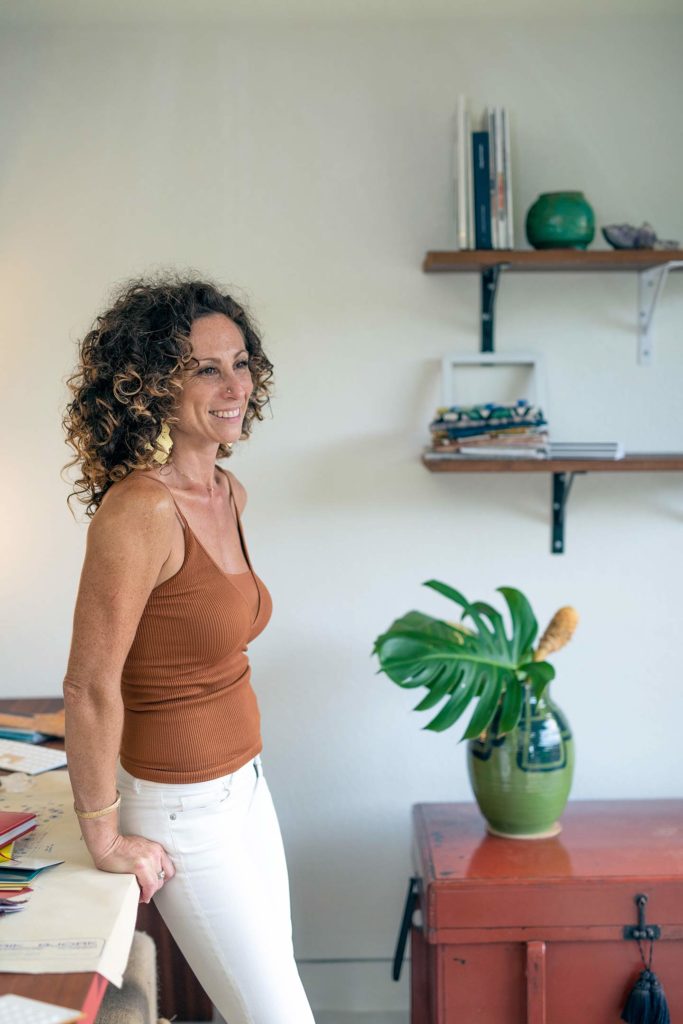
As Rivo learned the art of observation from beasts, she also learned an appreciation for interior design. When her parents built their family home on the property, not far from the wolf dens, the two-year endeavor sparked in Rivo an interest in the purpose of spaces—both place and feel.
By 8-years-old, Rivo was creating architectural drawings, including a re-imagining of the family home’s front exterior to include a scalloped bird bath. (Three decades later, Rivo laughs when she looks at the rendition, saying she now wouldn’t include such an ornamental fixture.) Years later, after graduating from high school, Rivo moved to O‘ahu to study design at Chaminade University.
There, she honed her passion into a profession, cultivating a design ethos at the crucial intersect of scene and sentiment. “With design, I’m working with an overall picture of an experience,” Rivo says. “There’s emotion and function to any space.”

Today, Rivo’s keen instincts, heightened observation skills, and inquisitive nature translate well to working with clients including Revolusun and American Savings Bank. Like in any relationship—whether between client and interior designer or human and animal—trust is paramount, Rivo believes. She strives for in-depth conversations and interactions with clients, knowing that sometimes, it’s what goes unspoken that conveys the most.
If, for example, a client says she wants a simple, monochromatic look for a space but is drawn to bold, colorful designs, Rivo works to bridge the gap. “I first figure out how a client reads a map,” she says. “Then I create that map.” While some designers are known for signature aesthetics, Rivo actively works to remove any sign of personal influence. “I don’t want the executed design to give away the designer,” she says. “This isn’t about me, it’s the client.”
Rivo considers herself to have a “primal” approach to her craft. Once a client’s vision is established, Rivo is fierce in its execution and not afraid to get dirty. During preliminary stages of project installation, she leaves the work gloves wayside, believing that unnecessary layers of protection would prevent her from understanding what she is working with.
Last winter, when Revolusun’s showroom lighting display was being built, Rivo spent hours handling pendants and LED strip lights, fixtures and switches alongside the electricians and installation crew. “I have been told I learn things sorta like an animal would—I have to physically handle it or carry it or smell it or put it in my mouth or work barefoot around it,” Rivo admits with a wry smile. “I like to make contact.” — R.S.


